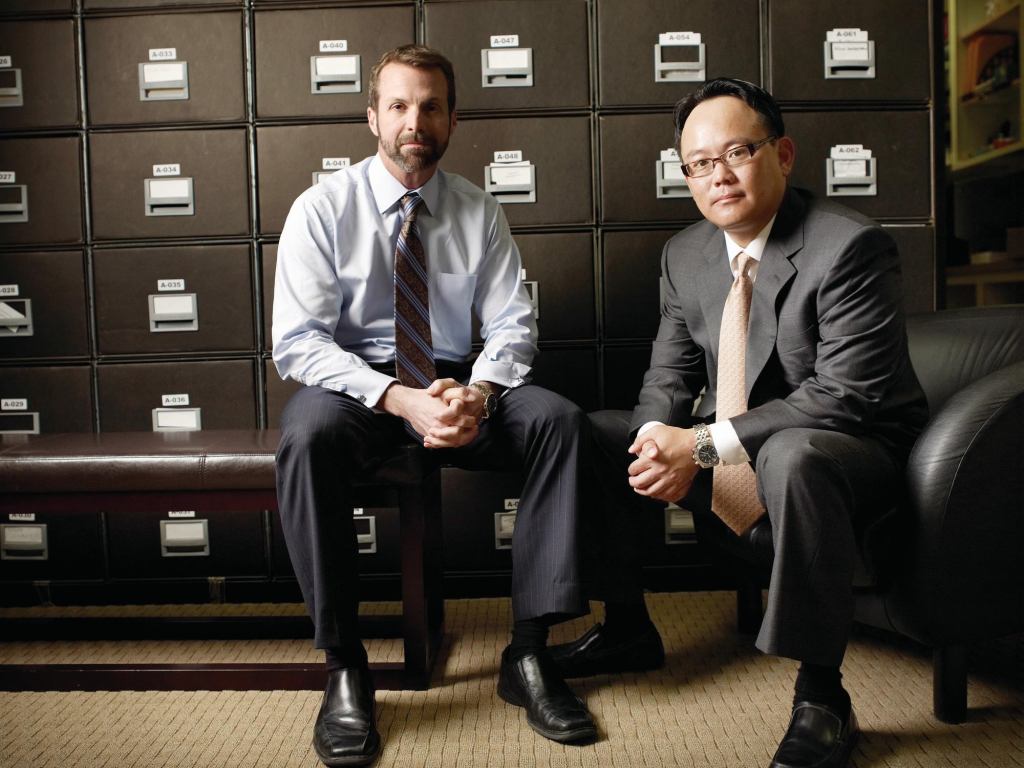Candy Wrappers
Soft-cost investments into charity programs and resident services strengthen property fundamentals.
There’s no denying that The Bascom Group is a firm built on youth. Co-founders David Kim, Jerry Fink, and Derek Chen formed the Irvine, Calif.–based company over a pitcher of beer and a handshake just steps from the University of Wisconsin at Madison campus where they met as students in the school’s renowned real estate program. In just 15 years, the company has hosted more than 100 interns to boot, and former interns now constitute nearly a third of the company’s personnel.
So it’s no surprise that Kim got a little restless when Bascom hit the pause button on acquisitions and renovations during the recession. So he channeled his energy into charity work. A member of the national development committee for UNICEF Trick or Treat (the annual Halloween program that has raised $160 million for children’s charities), Kim hit upon an idea: Launch UNICEF Trick or Treat programs across the 95-property Bascom portfolio. The result: $19,000 gathered by the children of Bascom residents, enough to convince Kim to attempt to pull in other major apartment firms into the 2011 effort.
The outreach was so successful in terms of resident goodwill and increased retention that Bascom manager of marketing and public relations Michelle Khuu has now taken charge of a national project to coordinate a variety of resident social services, including English as a Second Language and personal finance classes; immunization programs; and food and beverage company promos (pizza party, anyone?). The company even flew the head of sports psychology at Duke University to different properties to speak on the often iffy and difficult transition from high school to collegiate to professional sports.
“We just felt like we needed to relieve the stress of the recession and the threat of joblessness,” says Kim of the programs that he feels create a greater people-planet-profits synergy for Bascom and its resident base. “I don’t know how I’d quantify it, but I do think that the programs have an impact to the bottom line: They promote more timely rent payments; they give the on-site staff a sense of relevance and a way to build community and improve retention; plus, the kids love it. Sure, there are a couple fewer candy bars in the pile at the end of the night, but there are also fewer candy wrappers on site the day after that we have to pick up.”
Bascom takes advantage of that fee-management popularity by hiring two to three management firms in any given market and pitting them competitively against one another to produce best practices and solid property fundamentals. This year, the firm even asked all of its fee managers to come up with four new ideas for resident social outreach as a way of improving community cohesion and underlying property performance (see “Candy Wrappers,” on page 26). “We want to create competition not just on fees but also on performance,” Fink says. “We want to get away from the excuse that the market is soft and also apply best practices across our portfolio.”
Renovation Guns for Hire
Fink says the resulting operational model aligns with both the specific market-to-market and property-to-property repositioning needs while also matching up with internal and external investor return expectations. “We’re not in this for a fee-revenue business; we are really in it for the gross dollar profit return,” Fink says. “That’s consistent with our investors, who want to harvest the gains eventually—they are looking for total return and not necessarily month-to-month yield.”
And while investor competition in the B and C renovation sector remains muted, Bascom is prepared—and perhaps even hopeful—for a larger volume of dealmaking in 2011 and beyond. Consistent with the firm’s model since it invested in its first $2.2 million property 208 deals ago, Bascom will continue to partner with institutional and high-net-worth investors, typically on a 90/10 equity split arrangement and preferred profit returns with a targeted mid- to high-teen IRR. Historically, the company has averaged an unleveraged property IRR of 13.32 percent.
“We think the institutional equity is moving that way,” Fink says. “In 2010, all they wanted was As, and in 2011, they are already looking for B-plusses. Our sense is that later this year or early into next year, people are going to be looking for higher returns, and looking for distressed Bs and Cs that can be repositioned. They’ll do that by finding operators like us to develop ventures for targeting those assets.”
